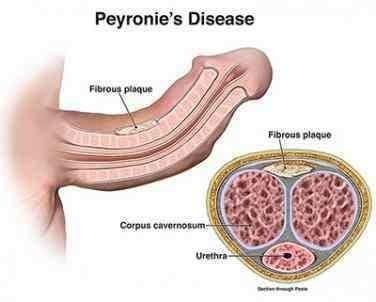
It’s common for the penis to curve slightly to the left or right when it’s erect. However, if you have a more significant bend in your penis, which may cause you pain or difficulty having sex, see your GP or go to your local genitourinary medicine (GUM) clinic. These can sometimes be symptoms of Peyronie’s disease.
#What is Peyronie’s disease?
Peyronie's disease causes the penis to become curved when it’s erect. The condition mostly affects men over 40, although it can happen at any age.
#What are the symptoms of Peyronie’s disease?
The symptoms of Peyronie’s disease include:
a thickened area or hard lump (plaque) in the shaft of the penis (it's rare to get more than one plaque)
a curve in the penis when it’s erect (usually it curves upwards)..pain in the penis, usually during an erection (pain in the non-erect penis is rare)
the penis looking misshapen, like an hourglass
loss of length or girth of the penis
Some men with the condition get pain in their penis, while others get none. If you do get pain, it may get better over time. However, in severe cases, the curve in the penis can make having sex difficult, painful or even impossible. Peyronie’s disease may also lead to erectile dysfunction.
#What causes Peyronie’s disease?
The cause of Peyronie's disease is not yet understood. It’s thought that the condition sometimes occurs after an injury to the penis when erect, such as being bent during sex. However, it can develop without any obvious cause. Peyronie's disease may run in families.
Non-surgical treatments for Peyronie’s disease
Many men don’t need treatment, as they don’t have pain or the condition doesn’t affect their sexual function. The condition can sometimes improve without treatment.
Various non-surgical treatments are available, including medicines and injections of steroids into the affected area. However, there is limited evidence of their effectiveness.
Surgical treatments for Peyronie’s disease
In severe cases, it may be possible to treat Peyronie’s disease with surgery. However, doctors recommend waiting at least 12 months before considering surgery, as the condition can improve in some men without treatment.
#Surgery may involve:
removing or cutting away the plaque and attaching a patch of skin or a vein to straighten the penis
removing an area of the penis opposite the plaque to cancel out the bend (this can lead to a slight shortening of the penis)
implanting a device to straighten the penis
What should I do if I’m worried about my curved penis?
If you’re concerned about a lump or bend in your penis, or if it’s causing problems with sex, go to your GP or a local GUM clinic.
#Follow,share and like my page
To the question in your title, my Magic 8-Ball says:
Hi! I'm a bot, and this answer was posted automatically. Check this post out for more information.